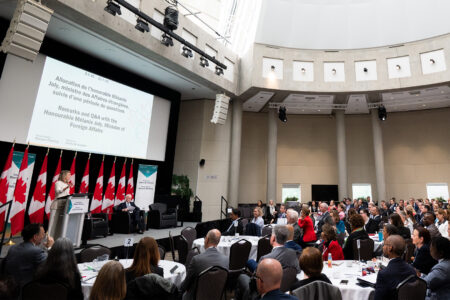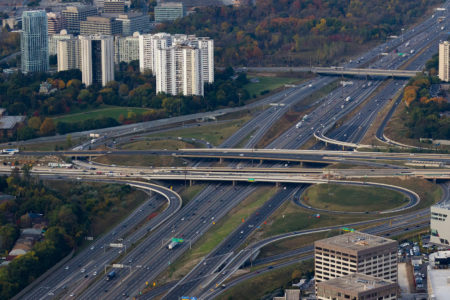
The world has changed over the last 60 years, and the mechanisms established at the end of the Second World War to promote international peace and security are no longer functioning effectively. UN Secretary-General Kofi Annan is right to pursue the goals articulated in his report, In Larger Freedom: Towards Development, Security, and Human Rights for All. For the international community to prosper through the twenty-first century, it will need the support and guidance of a stable and meaningful world organization. Annan is mistaken, however, to suggest that UN Security Council reform is integral to changes to the UN more generally. In fact, the proposals to reform the UN Security Council will not improve the global sit- uation. Rather, any effort to change the structure and function of the Council will almost certainly result in disappointment and a further discrediting of the UN as a functional organiza- tion. When it comes to international security, UN reformers should look back at the past before they attempt to make what would amount to a potentially significant mistake.
Proponents of Security Council reform argue that the structure established at the San Francisco conference of 1945 is antiquated. Their proposals, however ”” creating what amounts to regional sub-councils, enlarging the size of the security organization, and adding additional permanent seats ”” have been considered before. All three ideas were discussed in detail in the years leading up to 1945 and rejected, largely for good reasons. In fact, the entire theory of UN Security Council reform seems to be based on a mis- understanding of the history of the Council’s creation.
Denis Stairs’ article in this issue provides a cogent sum- mary of the origins of the United Nations. Professor Stairs points out that the founders of the organization were con- vinced that they would have to replace the old and ineffec- tive League of Nations with something better. The League had failed, they believed, largely for two reasons: first, it had not included all of the great powers (the United States in particular). Second, it had been paralyzed by its need for the unanimous approval of its members to act, even in the case of a security emer- gency. The solution, they felt, would be to eliminate the requirement of unanimity in a manner that would not alienate the most important states.
Not surprisingly, early British and American discussions of what became the United Nations therefore focused almost exclusively on what is now known as the Security Council. Prime Minister Winston Churchill envi- sioned three regional councils, each of which would be controlled by the great powers. President Franklin Roosevelt foresaw ”œfour policemen” (France was not yet free and therefore could not be considered a great power) controlling an exclusive executive council of the United Nations with a relatively power- less general assembly of all of the unit- ed nations underneath.
Both ideas antagonized the smaller states, and for good reason. In fact, even Joseph Stalin suggested once that the ideas sounded too much like a great power dictatorship. Therefore, faced with the real possibility that their allies would reject their proposals, the two leaders compromised. The concessions, howev- er, came slowly. The British refused to give up their attachment to regional rep- resentation: as leaders of a common- wealth and empire that extended across the world, they could maximize their influence by insisting on geographical balance (the British ideal would have seen Canada, South Africa, India, and one of Australia or New Zealand repre- sented on the Council along with them at the same time). The Americans were most adamant about the Council’s size. They did not want a body that would be dominated by those states whom they saw as inconsequential.
Their first proposed compromise envisioned an executive body made up of the four great powers along with four additional states serving non- renewable terms of a single year. By the time that representatives from both countries had arrived at the Dumbarton Oaks planning meetings of August 1944 (meetings from which the smaller states were excluded), their governments had settled on a council of eleven. The four great powers would have permanent seats and veto power over all significant decisions while the seven additional countries would serve non-renewable two-year terms. The decision on how to select the smaller states was left to the General Assembly.
As Stairs has explained, the period between the end of the Dumbarton Oaks meetings in October and the beginning of the San Francisco Conference the fol- lowing spring gave the self-proclaimed middle powers the opportunity to dis- cuss and propose fair ways to select non- permanent, non-veto-wielding Security Council representatives. When they looked to the great powers for support, the government in London seemed will- ing to listen. On February 25, 1945, the British War Cabinet and Postwar Committee met jointly to consider eight separate proposals for what today would be called ”œSecurity Council reform.” Among them were plans to enlarge the Council (from 11 to 15); to give priority to a group of specific states in the elec- tion of non-permanent members; to mandate regional representation; and even to actively discourage the smallest states from campaigning for a Council seat. In the end, the Cabinet committee decided to wait until San Francisco before making any specific recommen- dations. The risks of alienating any of the competing interests before the con- ference even started were too significant to do anything else.
The United Nations’ founding con- ference resulted in two compromis- es, and events five years later led to one more. According to article 23 of the new Charter, the five great pow- ers kept their veto and per- manent seats on the Council while the six non-perma- nent members received two- year non-renewable terms. The occupants of these latter seats would be determined based first on states’ contri- butions to the UN and to international security and second on the need for broad geograph- ical representation on the Council. According to article 44, members of the United Nations not represented on the Council could not be compelled to pro- vide armed forces to fulfill international security obligations unless they were first given the opportunity to participate in the decision-making process.
In 1950, in response to complaints that the great powers were misusing their veto and rendering the Security Council ineffective, the General Assembly passed Resolution 377 (V) A: ”œUniting for Peace.” It allowed all member states to discuss international security issues at the Assembly level, and even to recommend the use of armed force, if the Security Council failed to do its job. This resolution was invoked in 1956 and helped Lester Pearson win the Nobel Peace Prize, but it has been virtually ignored ever since.
Today, proponents of Security Council reform argue that the body’s small size (the Security Council now has 15 members, the number recommended by the British cabinet committee two months before San Francisco) and the great power veto have rendered it both unrepresentative (countries like India and Japan maintain that they deserve permanent seats) and dysfunctional. In Larger Freedom makes two proposals for reform. Both would enlarge the Council to 24. One would increase the number of non-renewable, non-permanent seats from nine to 11 and adds eight new four- year renewable (or quasi-permanent) ones. The other increases the number of non-renewable seats to 13 and adds 6 new permanent ones. The new members would be chosen based in part on their geographical location (six states would always come from each of four regions) and in part on their capacity to contribute to the goals of the general organization.
These ideas are flawed in four significant ways. First, enlarging the Council would make it less effective and in fact increase the influence of the great powers. The original decision to limit the size of the body to eleven was made in part to reflect the experience of creating the League of Nations. Although the smaller states were invited to participate in the discussions at Paris in 1919, most of the significant decisions were made by the great powers in private meetings; the large group was too cumbersome to be productive. A Security Council of 24 would have the same problem. It would be unable to manage issues that often require an immediate response. Inevitably, smaller splinter groups would break off to make the real decisions. Such groups would undoubtedly be dominated by the veto powers.
Second, the process for selecting the holders of the quasi-permanent or perma- nent seats would also lead to potentially significant political conflicts. In 1945, the so-called middle powers eventually accepted that, in spite of the legitimacy of their claim for differential treatment from the small states on the Council, it would be impractical for them to achieve formal recognition. Along the same line, while creating additional permanent seats might allow the Council to better reflect the power dynamics of today’s world, in the long term, the global power structure will continue to evolve. Some of today’s most influential states will decline, and some of the lesser ones will rise up. Under the proposed reforms, within a genera- tion or two, the UN would be facing the same legitimate international concerns that the composition of its most influen- tial body had once again come to reflect a power structure of the past.
Establishing additional permanent, or near-permanent, seats will also add another layer to the hierarchy of power already formalized within the UN and reinforce the notion that the organization does not in fact promote or respect the sovereign equality of all states. Reformers have traditionally stressed the importance of breaking down barriers and embracing greater international collaboration in an increasingly globalized world. These ideas are inconsistent with a proposal that will create further new divisions among UN member-states.
Finally, Security Council reform is a poor political move for an organization desperately in need of recognizable suc- cesses. Given the number of potential objectors to the proposals ”” great powers might hesitate to relinquish some of their control; middle-sized countries might object if they are not guaranteed the new permanent or near-permanent seats; and small states might not be willing to accept having their influence reduced even further in the long term ”” these changes are bound to face significant crit- icism, if they are not rejected outright. The secretary-general has described his proposals for UN reform as crucial to the long-term viability of the organization. A failure right now could be particularly damaging both to his and the UN’s cred- ibility. It risks undermining the entire reform process.
There is a viable alternative. It does not require significant political reform, nor does it rely on the explicit consent of the great or smaller powers. Instead, it makes better use of the mecha- nisms that are already in place. If the Security Council is to be more effective, member- and non-member states must adjust their attitudes and adhere more faithfully to the compromises established both at San Francisco and in 1950. Most importantly, they must begin to elect states to the Council based on the word- ing and intentions of article 23. The UN Secretary-General has made great progress in his attempts to define the criteria for the selection of non-permanent members explicitly, focusing rightly on their contributions to the UN budget, their participation in mandated peacekeeping missions, their involvement in the voluntary activities of the organization and, in the case of prosperous nations, their commitment to international development assistance.
All of this will be for naught, how- ever, if members of the Council contin- ue to be selected based largely on geography. Article 23 is clear that a country’s location in the world is meant to be a secondary consideration. Moreover, in an increasingly globalized and interdependent international envi- ronment, a state’s geographical presence should be less important to its capacity to understand and influence interna- tional security issues than its real capabilities. Rather than formalizing the regional representation requirements, as has been proposed, members of the UN should work together to minimize con- siderations of geography when electing Security Council representatives and focus more intently on choosing the most appropriate states for the job.
Second, since the great powers will not hesitate to block any significant UN reforms that threaten their interests, member countries should simply accept that the Security Council will never be free of the veto and the accompanying politics that have often tied its hands. When faced with great power intransi- gence, rather than complaining about the veto, they should make more active and effective use of the Uniting for Peace resolution, and bring a greater number of issues back to the General Assembly for discussion. Along similar lines, the UN membership should work cooperatively to establish the rapid response force that has been under consideration in a num- ber of different forms since 1945. Since participants in such a force would be drawn at least in part from states not rep- resented on the Security Council, article 44 would become increasingly relevant. According to the Charter, states would be allowed to withhold their troops from participation in peace support assign- ments unless they were invited to partic- ipate in decisions relating to them.
There are reasons that the Security Council provides disproportionate power to a small group of states: the great powers would not have agreed to participate in the general organization without it, and their absence would have left the world with, at best, another pow- erless League. The rest of the members of the United Nations have always known and accepted this. Every delegation at San Francisco in 1945 understood that the new organization had solidified an international hierarchy of power that would be practically impossible to alter. The Big Five had insisted that they main- tain their right to veto future amend- ments to the Charter, including anything to do with the Security Council and veto power. This was their price for world peace then, and this price is no different today. With these thoughts in mind, over the next few months, as the members of the United Nations continue to debate Secretary- General Annan’s reform proposals, they should focus on battles they can and should win, and leave discussions of the Security Council for another day.






